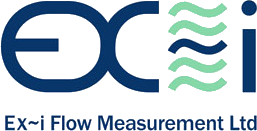The oil and gas sector is a sprawling industry. The length and breadth of the supply chain is mind-blowing. With the pressure on prices and the reluctance of the consumer to bear the weight of increased costs, the time has come when collaboration is the only way to ensure effective and efficient delivery.
Here we explore the main arguments for greater integration and cooperation across the supply chain and potentially between competing entities.
We are bloated and overweight
From exploration, to drilling, to production, to logistics – there is company after company in a supply chain that goes on beyond imagination. There are obvious areas of speciality and unique demands.
However, there are also costs that are borne by each company time and again – when it might only need to be paid once, if only there was greater cooperation.
An obvious example is transportation. If each stage in the supply chain takes responsibility for its own logistics, it is likely that there is an increase in costs because each is having to consider transportation in their own way- whether an in-house fleet or hiring out to an external company. If logistics was overseen by the business deemed to be at the core of the supply chain, then costs can be managed, and efficiencies made.
Creating a one-stop shop
The collaboration can go further than just cooperation in an individual area of the business, such as logistics. Many have pointed to the possibilities of vertical integration. This is sourcing of services and equipment for the supply chain as a whole by a single entity. This means purchases and hires are rationalised – and not scattered across a fragmented supplier base.
There may be a role for a company to offer such services to a supply chain. However, it is also possible to develop these services in-house. Many OFSE companies are doing just this – and have reported savings of up to 30%.
More radically, there are also partnerships being made between companies offering similar services.
For instance, there has been some sharing of reservoir and well technology to ensure the efficiency of all companies working at the business end of the sector. Alternatively, there is the possibility of mergers between companies close in the supply chain. For instance, in 2016 FMC technology merged with Technip – helping to redefine the design and maintenance of subsea equipment.
The possibilities of new technology
Obviously, such cooperation across a supply chain is complex and requires models of management and data sharing that is efficient and protects internal intellectual property. However, technology has developed to a degree where it is possible for each company within the chain to see other parts of the chain in detail.
Oil and Gas Supply Chain integration has been made possible by IT companies such as IBM, Oracle, Suppliview and QuintIQ. These software providers make a lot of promises. However, it is likely that choosing a package that connects companies in a complex supply chain could reduce costs, improve visibility and provide an overview of complex operations that in turn could improve effectivity and efficiencies.
The major benefit of a shared software is a chance to identify any weaknesses or failure points that will ultimately impact everyone – most noticeably the end consumer.
In short
When a sector grows organically, over many years, it is likely that inefficiencies are built in as it expands. Companies along the supply chain, and even between competitors, are likely doing the same thing in different ways and for a lot of money. With the pressure on prices it is important to find ways to make savings. Collaboration could be an opportunity – even though it might seem impossible to envision.
Exi Flow Measurement specialises in products for the gas and liquid measurement industry – manufacturing, researching and developing with a focus on continuous project development and enhancement. To speak to us about how we can help you, call +44 (0)1243 554920 or contact us here.
